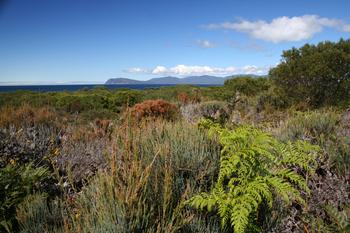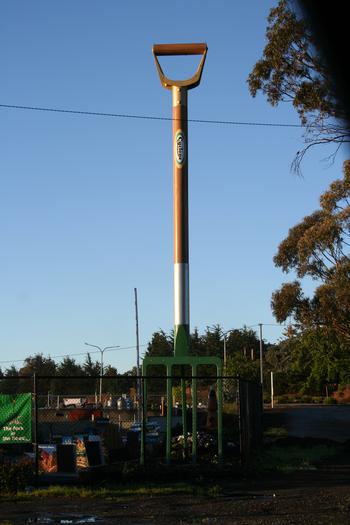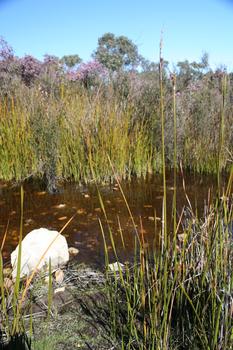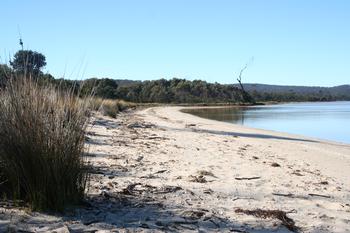Bruny Island
Finally the weather is starting to improve. The day dawned as sparkling as the after picture in a dish-washing commercial. We got a 6am start to make sure that we were on time for, and could get a place on, the 7:15am ferry to Bruny Island, where we're told we'll maximize our chances of achieving one of our top objectives: all the Tasmanian endemic (birds) in one day. We needn't have worried, when it sailed there were four cars on it. But the bad news is that the last ferry back was at 6:00pm, which meant that one of the items on our checklist—the Fairy (or Little) Penguins coming home for the night is a non-starter. We're here because Bill says that that is the best spot for trying to see all of Tasmania's indigenous birds in one sitting. It's a good job that the penguins are not indigenous.
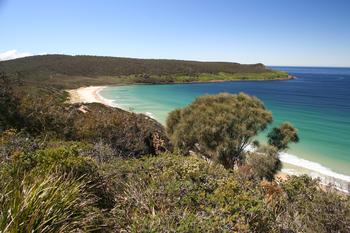 |
We find a trail head and spend a couple of hours following it to the coast, where it opens onto a spectacular, and of course, deserted beach. We climb the headland and photograph another just like it, but the tide is in so we can't complete the loop by rounding the headland on the beach, so do not descend. |
Soon after returning to the car, we stop to watch (too quick to photograph) a respectably-sized, and venomous-looking snake that is crossing the road.
The way it reverses its decision and heads back into the safety of the bushes, coupled with our recent walk along a clearly well-used trail do much to diminish my fear that we would be in imminent danger of being attacked by something deadly the moment we stepped off the road. |
 |
Lunch of scallops, chips (fries), and an English-style salad of two pieces of lettuce supporting a quarter tomato and two limp slices of cucumber is served in a huge canteen-style pub that seems completely disproportionate to the size of the community. We later learned that despite the remote locations of many of the homesteads a thriving social life is maintained by driving into town on Friday and Saturday nights. This, and many like it that we will use in the days to come, is clearly where they congregate.
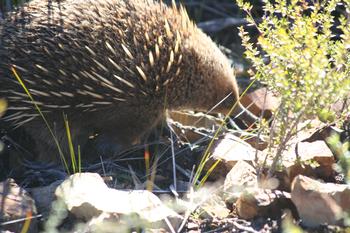 |
We spot our first Tassie Devil, but it is road kill. We also see my first wallaby, but it is also road kill. The road kill is so prevalent that if you stop and get out of the car at random, you'll tread on skeletal remains. So the highlight mammal-wise, is undoubtedly the two (alive and well) echidnas (and yes folks, I checked, there are only three living monotremes, the duck-billed platypus and two species of echidna). We are even close enough for long enough to photograph one of them. Check! |
We knocked off all but one of the 12, or 13, or 15 indigenous bird species (depending on who is counting). Well, to be exact, Wayne saw them. I saw about half of them. The parrots and cockatoos of course are spectacular but my favorite is the kookaburra (sp) which is a foot-tall kingfisher. To Wayne's frustration, the one thing we do not find is the Forty-Spotted Pardalot, despite some rather specific instructions on where to find them.
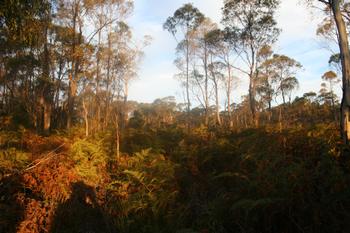 |
So on returning to the mainland, we head for the "Peter Wurrell Reserve" which Bill claims is another likely spot for the Forty-Spotted Pardalots. Even better from my perspective, it is also reputed to be home to platypus, and since it is dusk by the time we find it, we have maximized our chances of seeing them. It is about a mile and a half to the platypus pond from where we park the car, and on the way, a veritable flock of Forty-Spotted Pardalots. It's just another LBJ to me (Little Brown Job) and indeed even Wayne struggles to positively separate it from its similar-looking cousins, but eventually we see one so close that Wayne is able to show me the tell-tale differences. Check! |
| We walk all around the platypus pond, and spend about ten minutes willing something to the surface, but there is not so much as a ripple. We're concerned about the failing light, and the mile and a half to the car which we don't really want to retrace in the dark (though we brought our headlamps) so we head for home. Heading for home eventually takes us right through downtown Hobart, and we stop at the Hope and Anchor for my second round of Leatherwood Porter and Wayne's first outing to this famous landmark (Bill mentions it). |
 |
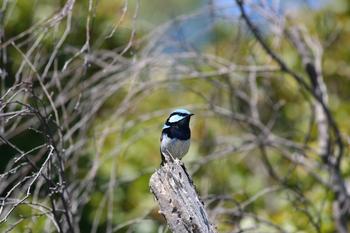
|
 |
 |
|
Tasmania has 317 bird spp, the 13 endemics being:
Green Rosella Platycercus
caledonicus
Swift Parrot
Lathamus discolor
Tasmanian
Native-hen Gallinula mortierii
Yellow-throated Honeyeater Lichenostomus
flavicollis
Black-headed Honeyeater Melithreptus affinis
Strong-billed
Honeyeater Melithreptus validirostris
Yellow Wattlebird Anthochaera paradoxa
Forty-spotted Pardalot Pardalotus quadragintus
Brown Scrubwren Sericornis
humilis
Scrubtit Acanthornis magnus
Tasmanian Thornbill Acanthiza ewingii
Dusky Robin Melanodryas vittata
Black Currawong Strepera fuliginosa.
Established in 1807, The Hope and Anchor Tavern in Hobart is arguably
Australia's oldest Pub. There were a couple of older pubs in early Sydney
Town catering to the thirst of our first settlers, but they are no longer around
or had significant breaks in their trading history. That's why we reckon we're
the oldest, we certainly are the longest trading on the one site. Open every
day from 11am till late (can be open till 3am). 65 Macquarie Street, Hobart.
Tiger Snake
The Tiger snake Notechis scutatus is a usually timid species which, like most snakes, usually retreats at the approach of a human. They are an interesting snake which despite the name may not have any striping at all.
The Tasmanian Tiger Snake has recently been shown to be the same species as that which occurs on the south-eastern Australian mainland. The markings are extremely variable and should not be used in isolation to identify snakes. Colors range from jet black, through yellow/orange with gray bands to sandy gray with no bands. Typical forms are of a black snake with either no bands or faint yellow to cream bands. Dark olive snakes with yellow bands are fairly common.
The last person to die from a tiger snake bite was a woman in Melbourne, but this is now a rare event due to the prevalence of antivenom. Not in the same league as the tiapans, it is nevertheless one of the more venomous of Australia's long list of deadly snakes.
Kookaburra
This merry bird is best known for its distinctive laugh-like call that rises to a ringing crescendo through the treetops. With a stocky body and
large pointy beak it is a popular Australian bird and is often friendly enough to land on veranda railings for an offered morsel. Mostly gray brown and white in color, the kookaburra is quite a large bird of around 50cm long. Unlike other members of the kingfisher family that catch small fish, the kookaburra preys mainly on mice, lizards, insects and the odd small snake. The kookaburra usually makes its nest in the cozy nook of a tree hollow. In breeding season it will lay up to four eggs and then sit on them for about 3 or 4 weeks. When young grow up, its quite common for them to stick around for several years helping to rear new chicks. Amazingly a kookaburra can live more than 20 yr. |
|
 | |
 |
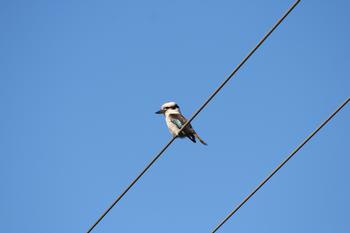
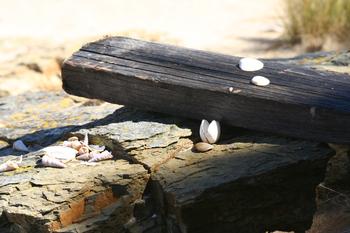
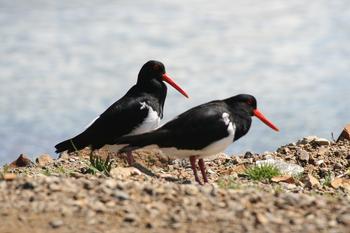
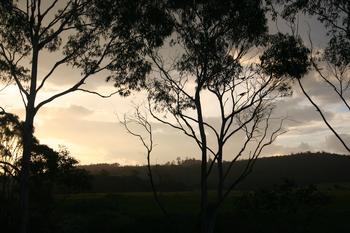
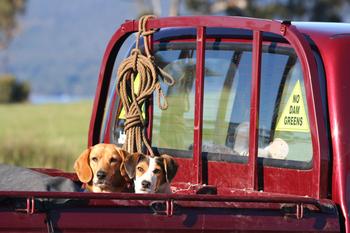
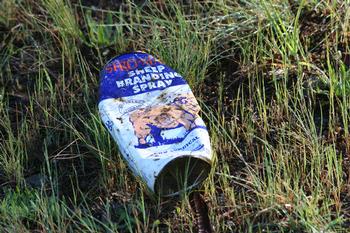
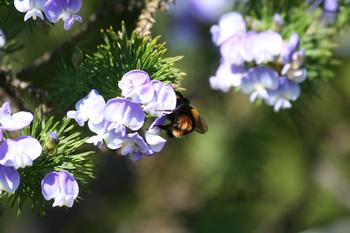
|





